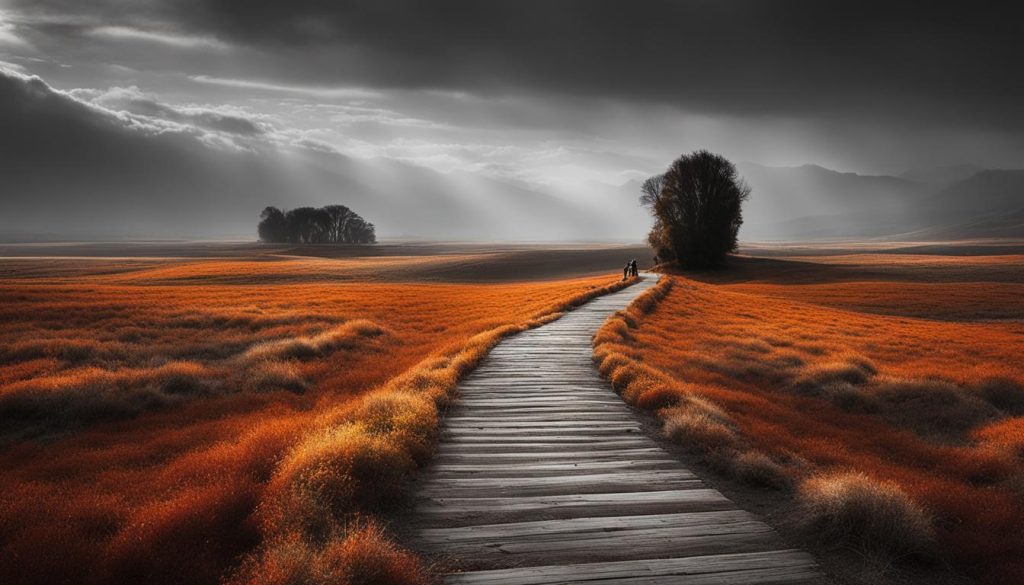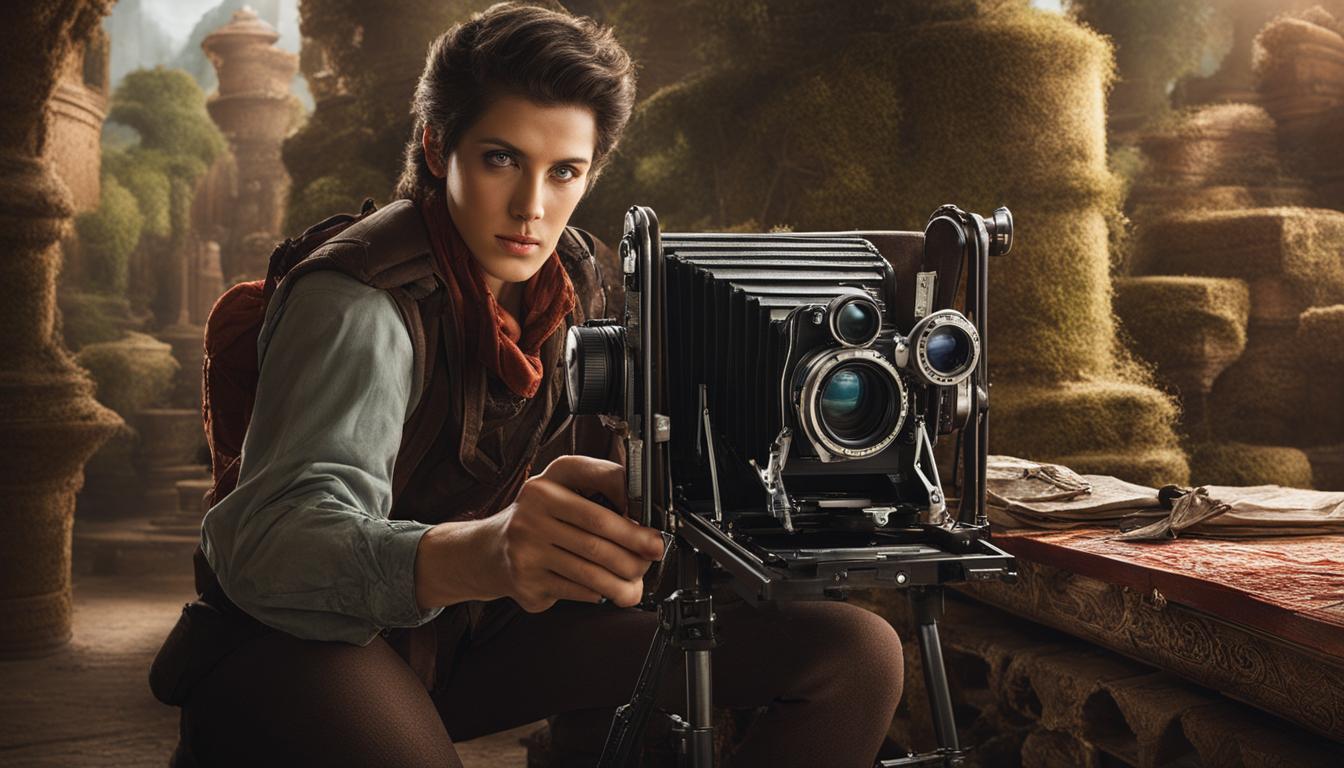Whether you’re a seasoned professional or just starting out, documentary photography allows you to capture authentic moments and tell powerful stories through your images. To take your documentary photography to the next level, we’ve created an essential checklist guide to ensure you don’t miss anything during your next project.
In this guide, we’ll provide you with a step-by-step approach to documentary photography, including details on equipment, research, composition, and storytelling. Let’s get started!
Key Takeaways:
- Documentary photography captures authentic moments and tells powerful stories through images.
- Our essential checklist guide will help you elevate your documentary photography skills.
- The guide includes crucial steps in documentary photography, such as equipment, research, framing, and storytelling techniques.
- By following the steps outlined in this guide, you can create impactful images that leave a lasting impression on your viewer.
- A thorough understanding of documentary photography and proper planning can make all the difference in capturing a successful project.
Understanding Documentary Photography
Documentary photography is a genre of photography that captures candid moments of reality. It aims to truthfully represent a subject or a situation through images. It tells a story through compelling visual narratives and evokes emotional responses from the audience.
The purpose of documentary photography is to create a visual record that documents an event, a place, or a culture. It captures moments of history that might otherwise be lost, forgotten, or overlooked. As photographers, we have the responsibility to present the subject matter truthfully and with respect.
Documentary photography differs from other forms of photography, such as portrait or landscape, in that it focuses on the story behind the image rather than its aesthetic beauty. It demands an eye for detail, a sensitivity to the subject matter, and a commitment to accuracy.
Examples of Documentary Photography
“Migrant Mother” by Dorothea Lange is a powerful example of documentary photography. The image captures the desperation and suffering of a mother during the Great Depression. It tells a universal story of poverty and resilience that resonates even today.”
Other notable documentary photographers include James Nachtwey, Sebastião Salgado, and Mary Ellen Mark. Their photos capture a diverse range of subjects, from war and conflict to social issues and cultural traditions.
Essential Equipment for Documentary Photography
Documentary photography captures reality and tells stories in a powerful and authentic way. To ensure you have everything you need to take compelling photos, it’s essential to have the right equipment. Let’s take a look at some of the must-haves for documentary photography:
Camera
A high-quality camera that allows you to capture stunning images is the foundation of your photography kit. Look for a camera that is durable, has excellent low-light performance, and can capture images quickly, ensuring you don’t miss important moments. Brands like Canon, Nikon, and Sony offer a wide range of cameras suitable for documentary photography.
Lenses
Documentary photography often involves working in a range of lighting conditions, so a versatile set of lenses is crucial. Prime lenses with a fixed focal length, such as 35mm or 50mm, are ideal as they offer excellent low-light performance and sharp images. Zoom lenses, such as 24-70mm and 70-200mm, offer versatility and are excellent for capturing portraits and candid shots.
Tripod
A tripod stabilizes your camera and helps avoid blurry images when using slow shutter speeds. It can also help you achieve consistent framing and composition, making it an essential tool in documentary photography. Choose a lightweight tripod that is easy to carry on location, such as the Manfrotto BeFree Aluminum Travel Tripod.
Other important accessories to consider for your kit include memory cards, extra batteries, and an external flash. With the right equipment in your kit, you can confidently capture the essence of reality and tell powerful stories through documentary photography.
Research and Planning for Documentary Projects
Documentary projects require careful planning and extensive research to effectively convey the story you want to tell. Through research, you can uncover the most vital and interesting aspects of your documentary project, and create a plan of action that guides your process.
Before beginning any project, it’s essential to have a clear idea of your goals, story angle, and the message you want to communicate through your images.
Start by researching your subject matter thoroughly, from a variety of sources. Use books, newspapers, magazines, and online resources to build a solid foundation of knowledge about your topic. The more familiar you are with your subject, the easier it will be to identify the most interesting and impactful moments to capture.
Next, create a shot list that outlines the specific elements you want to include in your project. Setting up a storyboard or timeline can also help you visualize the project and decide on the most important elements to include.
Remember, documentary photography is all about capturing reality and telling a story through images. By conducting thorough research and planning ahead, you can ensure that your final product is a powerful, compelling, and effective representation of your subject.
Composition and Framing Techniques
Composition and framing are essential elements that can take your documentary photography from good to great. By mastering these techniques, you can capture images that draw in your viewer and tell a powerful story.
Composition
Composition refers to how elements within an image are arranged. It’s about organizing the visual components in a way that creates a harmonious and dynamic balance. The rule of thirds is a fundamental principle of composition, where you divide your image into thirds both horizontally and vertically and place your subject at the intersection of the lines. Other composition techniques include leading lines, symmetry, and framing. By using these techniques, you can create images that are visually interesting and have a clear focus.
Framing
Framing refers to placing elements within an image to give context or emphasize the subject. It involves using natural elements such as doors, windows, and arches, as well as artificial elements like signage or other objects to frame your subject. The goal is to draw the viewer’s attention towards your subject and highlight its importance within the frame. By effectively framing your subject, you can create images that are not only visually appealing but also tell a compelling story.

By mastering composition and framing techniques, you can create documentary photographs that are powerful and impactful. Experiment with different techniques to find the ones that work best for your style and subject matter.
Approaching and Engaging with Subjects
Documentary photography is all about telling a story through authentic and impactful images. To achieve this, it’s essential to build a connection and trust with your subjects. Here are some tips on how to approach and engage with them:
1. Introduce Yourself and Explain Your Intentions
Introduce yourself politely and explain the purpose of your project. Take the time to listen to their questions and concerns. The more open and transparent you are with your subjects, the more likely they are to trust you.
2. Respect Their Privacy and Comfort Levels
Not everyone is comfortable being in front of a camera, especially in intimate or vulnerable situations. Respect their privacy and comfort levels, and never take photos that make them feel uncomfortable or unsafe.
3. Be Patient and Observe
Patience is key in documentary photography. Observe your subjects and their surroundings, and wait for the perfect moment to capture the shot. Don’t rush the process and be willing to spend time with your subjects to build a relationship.
4. Go with the Flow
Documentary photography is unpredictable, and things don’t always go according to plan. Be flexible and go with the flow, letting the situation guide your shots. You never know when you might capture an unexpected moment that tells a powerful story.
Remember, building a connection with your subjects is vital to capturing authentic and honest moments in documentary photography. By following these tips, you can engage your subjects and tell their stories in a respectful and impactful way.
Telling a Story through Photojournalism
Photojournalism and documentary photography are about communicating events or stories through a series of images. The difference between the two is that photojournalism is more about capturing current events as they happen, while documentary photography covers broader topics and may not always be time-sensitive. However, both are about storytelling and painting a picture that elicits an emotional response from the viewer.
When it comes to storytelling through photojournalism, the key is to be honest and authentic. The images should tell a story that is true to the subject or event and create a bridge between the viewer and the story. Documentary photography is not just about the images but how they fit together to construct a narrative. Each image should contribute to the overall story and help the viewer understand the subject or event better.
A good way to approach photojournalism is to think of yourself as a storyteller and use your camera to capture the essence of the story. Look for images that communicate the emotions and feelings of those involved. Pay attention to the angles and composition of the images to create a visually appealing flow that guides the viewer through the story.
“The whole point of taking pictures is so that you don’t have to explain things with words.”
― Elliott Erwitt
Another technique for telling a story through photojournalism is to use juxtaposition. Juxtaposition involves placing two images next to each other to create a contrast that highlights the message or theme of the story. This can help to create an emotional response and communicate the message without the need for words.
Ultimately, good photojournalism or documentary photography requires a combination of technical skill and storytelling ability. When done well, they have the power to inform, educate and inspire viewers.
Conclusion
We hope this comprehensive guide has provided you with valuable insights into the world of documentary photography. Remember, the key to capturing powerful and authentic images is to understand the essence of reality and to tell compelling stories through your photographs.
By following the essential documentary photography checklist outlined in this guide, you can elevate your skills and take your photography to new heights. Remember to conduct thorough research, plan your projects, use the right equipment, master composition and framing techniques, and build a rapport with your subjects.
With these tips and tricks in mind, you can become a master storyteller through your documentary photography. So grab your camera, hit the streets, and capture truth, beauty, and life in all its glory.






